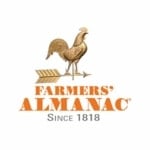One Potato, Two Potato, Three Potato, Four: The Story of America’s Favorite Vegetable
Potatoes have become one of America's favorite vegetables. We get to the roots of the potato, where it came from, and how it made its way onto our plates, and into our hearts.

Americans can’t seem to get enough potatoes. The average American eats 120 pounds of potatoes each year. That’s double the amount of the next largest consumed vegetable, lettuce. How is that possible, you ask? Think back to what you’ve eaten this week. Did you indulge in fries or chips; or mashed, baked, or hash browned potatoes at least once? The potato has come a long way to be a very popular vegetable in the United States.
Potato Beginnings
Evidence of potato cultivation in the Andes of Peru has been dated to as early as 10,000 B.C. Cultivated by the Inca as their empire grew, the batata became a major food source and an integral part of the Andean culture. Potatoes were (and still are today) processed into chuño, freeze-dried potatoes, by leaving the potatoes out over night in the cold, then pressing the water out by treading on them. Potato farming and processing was a way of life in the Andes, and spread to the Old World after the Spanish conquered Peru in the 1500s.
As the potato was unfamiliar to Europeans, potatoes were at first feared and only fed to prisoners and animals. It wasn’t until the late 1580s that the potato began to be grown and eaten as a regular part of the European diet.
An employee of Sir Walter Raleigh introduced the potato to Ireland in 1585, with the first plantings at Raleigh’s estate in County Cork, Ireland. During the next 250 years, the potato became the main, and frequently the only, sustenance of the Irish population. In 1845, a fungus called late blight infected the potato crop, and over the next five years more than 3,000,000 Irish died or fled the country in hunger and desperation.
Germans also cultivated the potato, making it a part of their diet by the late 1700s. During that time, French chemist and agriculturist Antoine-Auguste Parmentier recognized the value of the tuberous plant and studied it extensively. Parmentier helped to overcome the fear of potatoes by planting them in a fenced-in field and posting guards to watch over the “elite” new vegetables. With the guards instructed to look the other way, the fields were pilfered and the commoners began to cultivate the pommes de terre, or “earth apple.”
The potato reached the shores of North America in 1621, as a gift from the Governor of Bermuda to the Governor of Virginia. It was another 100 years before the first permanent potato patches were established near Londonderry (Derry), New Hampshire, by Scotch-Irish immigrants. Potatoes slowly became a staple of the New World’s diet. While serving as the Ambassador to France in 1767, Benjamin Franklin attended a feast hosted by Parmentier, and brought home potatoes and tales of their delicious possibilities. George Washington had them planted at Mount Vernon in 1767. Thomas Jefferson was serving them at Monticello by 1772, and at the White House during his Presidency in the early 1800s.
In 1853, while vacationing at the Saratoga Springs resort in New York, railroad magnate Commodore Cornelius Vanderbilt kept sending his fried potatoes back to the kitchen, complaining that they were cut too thick. Chef George Crum took on the challenge, and by cutting the potatoes paper-thin, then frying them in hot oil and salting them, pleased Vanderbilt and “Saratoga chips” became all the rage.
Potatoes Today
In the United States, potatoes are grown commercially in every one of the fifty states. Over the last 50 years, major advances in the cultivation, storage, and processing of potatoes have helped to increase the consumption of the tasty tuber from 106 pounds per person in 1950, to 142 pounds per person in 2000. One of the advances that changed the potato industry was the development of the frozen fry by the J.R. Simplot company in 1953. Americans were eating 4.6 pounds of frozen potato products in 1959, but a whopping 61.7 pounds by 1999.
In 1972, potato farmers across the country recognized that, with the ever-changing palate of American consumers, the growers needed to band together to provide recipes and nutrition information to the public. With the help of Congress, The Potato Board was formed. Through the work of The Potato Board, the potato became the first fresh vegetable to carry a nutrition label.
They’re Healthy Too!
Potatoes are a fat-free, cholesterol-free and sodium-free food. They are high in Vitamin C and potassium and are a good source of Vitamin B6 and dietary fiber. A medium potato (5 1/2 oz.) only contains 145 calories and can be a great addition to any meal, or can be a meal itself.
Boil them, mash them, fry them or dry them, potatoes can easily be fit into any meal plan. With 40 billion pounds of potatoes produced in the USA each year, there’s plenty for you to eat.
The Potato Board’s Web site rise and can be a great addition to any meal, or can be a meal itself.
The Potato Board’s Web site www.PotatoHelp.com offers more history and facts, along with more than 100 recipes for fabulous potato dishes. So, the next time you’re eating potatoes, remember the long history of the spud and enjoy!
How To Get The Most Out Of Potatoes
– Potatoes keep best when stored in a cool, humid, dark, well-ventilated place.
– Leave the skin on potatoes to retain nutrients, save time, and add texture to your dishes.
– Cut potatoes into uniform-sized pieces before cooking. This way the pieces will cook at the same rate.
– Shave off cooking time by microwaving potatoes.
– www.PotatoHelp.com is accessible 24/7 to help you with recipes and tips.
This article was published by the Staff at FarmersAlmanac.com. Any questions? Contact us at [email protected].













I want to know how to plant them. So far, i haven’t found that information.
Me either; though I’m looking for harvest info. I live in zone 6. I let the potatoes sprout in the cupboard. Cut them into pieces leaving two sprouts on each piece. I planted them hand deep and watered a few times each week. Once the plant was 10-12 high, I added dirt. Once all the plant stalks came down, I began harvesting. I’m wondering what the consequences are of leaving potatoes in the ground after night temps drop to 20.
I Love potatoes any way they can be eaten. That is something I always buy. Thank you to all the Farmers for the hard work and effort put in to making sure all Americans get to eat. I also would like to give Thanks to all the Truck drivers that deliver this product to our stores and such. I have to have potatoes and meat to survive.
Good article, very informative. Me and all of my family love potatoes. We eat potatoes made in everyway possible!